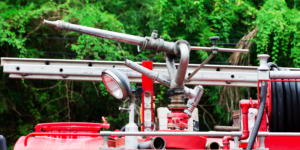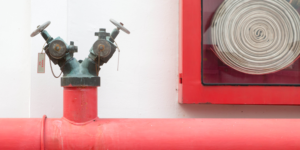For most individuals, the concept of a residential fire sprinkler system may appear simple. I take it that the system’s purpose is to keep your house fire-safe. Yes, but the world of fire sprinklers is a lot more intricate and subtle than it first seems, especially when it comes to retrofitting them into already-existing homes. We will examine the nuances of fire sprinkler retrofits in this extensive tutorial to assist you, the end user, in comprehending these systems better.
Fire Sprinkler Retrofits: What Are They?
Installing fire sprinkler systems in already-existing residential structures is known as a “fire sprinkler retrofit.” In the event of a fire, these systems can save lives and are essential for improving fire safety. In order to suppress or put out a fire, they swiftly detect it and release water on their own. These systems are becoming more popular in residential settings even though they have long been a typical element in business structures.
For properties without them, installing fire sprinkler retrofits is especially crucial. For instance, older homes might not have had these systems installed when they were constructed. In this instance, retrofitting is a preventative step to raise your home’s fire safety.
Advantages of Retrofitting Fire Sprinklers
Installing fire sprinkler retrofits has many important advantages. Let’s examine a few of the main benefits:
Enhanced Security
Increased safety is the main advantage of fire sprinkler retrofits. These devices can react to a fire rapidly, reducing the amount of property damage and—more importantly—saving lives. They are especially important in homes where there may be few exits or other obstacles that make escape difficult.
Preservation of Property
Fire Sprinkler Retrofits can considerably lessen the amount of property damage sustained in the event of a fire. These technologies’ rapid reaction times help stop flames from spreading and wreaking massive damage. Costs associated with replacing and repairing property might be significantly reduced as a result.

Calm State
You and your family may feel more at ease knowing that your house has a dependable fire sprinkler system. Having a precaution in place can significantly alter how you view and respond to possible fire threats, as fire mishaps are frequently unforeseen.
Potential Advantages of Insurance
Your home’s insurance prices may go down if you install fire sprinkler retrofits. Homeowners who install these systems might receive savings from many insurance carriers as they lower the chance of damage from fires.
Fire Sprinkler System Types
Sprinklers for fire Retrofits are not universally applicable. When retrofitting your home, there are several system types to take into consideration. The most typical kinds consist of:
Wet System Pipework
The simplest and most popular type of fire sprinkler system is the wet pipe system. Since there is always water in the pipes in this configuration, when a fire is discovered, water can be released right away. The greatest places for these systems are ones where freezing is not an issue.
Systems of Dry Pipes
Systems for dry pipes are intended for locations where freezing temperatures are common. Compressed air is used in place of water in these pipelines, and water is only released when a fire triggers the system. This keeps the water in the pipes from freezing.
Advance Systems
Wet and dry pipe systems are combined to create pre-action systems. For them to release water, a fire sprinkler head must be activated in addition to receiving a fire detection signal. These devices are frequently employed in locations where an unintentional water leak could result in serious harm.
The Installing Procedure
Installing fire sprinkler retrofits in your house usually entails the following important steps:
Design and Planning: Creating the system’s design is the initial phase. This includes figuring out how the sprinkler heads are arranged, choosing the right kind of system, and locating the water supply.
Permitting: Installing a fire sprinkler system may require a permit, depending on your local building requirements. Before continuing, make sure you finish any documentation that is required.
Installation: The work can start as soon as the design is complete and the necessary permissions are secured. This includes attaching the control panel, sprinkler heads, and pipes.
Testing and Inspection: The system is extensively tested to make sure it operates as intended following installation. To ensure that safety regulations are being followed, inspections might also be necessary.
Maintenance: To maintain your fire sprinkler system operating at its best, regular maintenance is essential. This entails doing routine inspections, making sure the water supply is unimpeded, and looking for leaks.

Selecting a Reputable Installer
It’s crucial to choose the correct business or expert to install your fire sprinkler retrofits. Selecting a trustworthy installer with knowledge of residential fire sprinkler systems is crucial. Make sure they are knowledgeable about the building standards and regulations in your area, confirm their qualifications, and run references.
Adherence to Regional Laws
The installation of fire sprinkler systems must comply with local building codes. Working with an installer who is aware of and adheres to these requirements is essential. Disregarding local restrictions may cause issues and prolong the installation procedure.
Budgetary Factors
Installing a fire sprinkler system in your home requires financial investment. Making a budget and being aware of the expenses is crucial. The type of system, the size of your property, and any unique architectural specifications can all affect the cost. Be ready to pay for installation as well as continuing upkeep.
Upkeep and Examination
After your fire sprinkler retrofits are installed, it’s crucial to do routine testing and maintenance. To ensure the system’s dependability, make sure you schedule regular inspections and have a maintenance plan in place. Any problems can be found and fixed by routine testing before they become serious.
In summary
The installation of residential fire sprinkler systems, such as Fire Sprinkler Retrofits, is essential for improving home fire protection. In addition to preserving property and increasing safety, these devices also give homeowners peace of mind. When thinking of a retrofit, it is crucial to comprehend the various system kinds, the installation procedure, and the important factors for end users.
Keep in mind that hiring a certified installer, according to local laws, planning a budget for the installation and upkeep, and continuing to be proactive with testing and maintenance are all essential steps in the process. Considering these elements and learning more about Fire Sprinkler Retrofits will help you make wise choices that will improve your home’s security and safeguard the people you care about.
